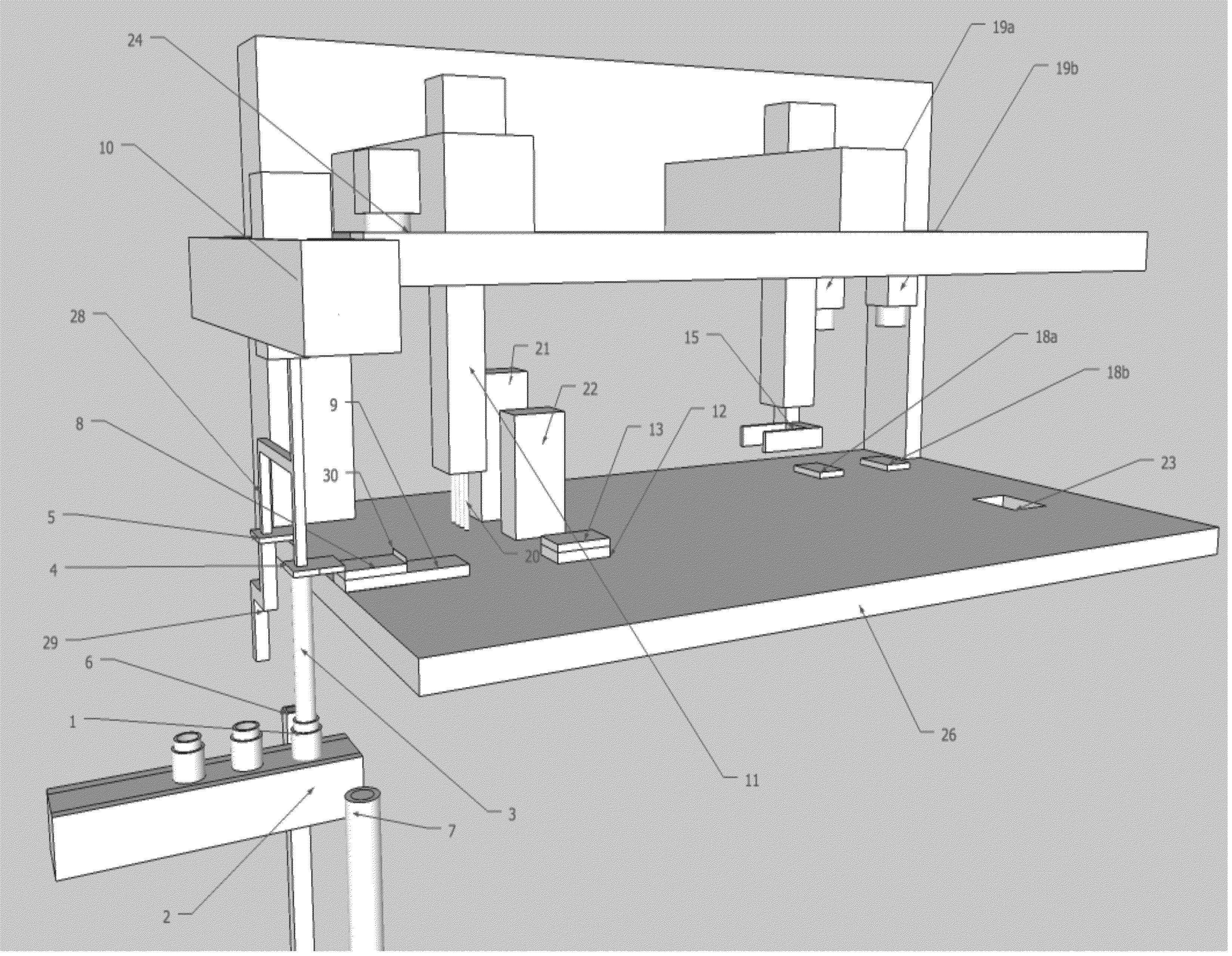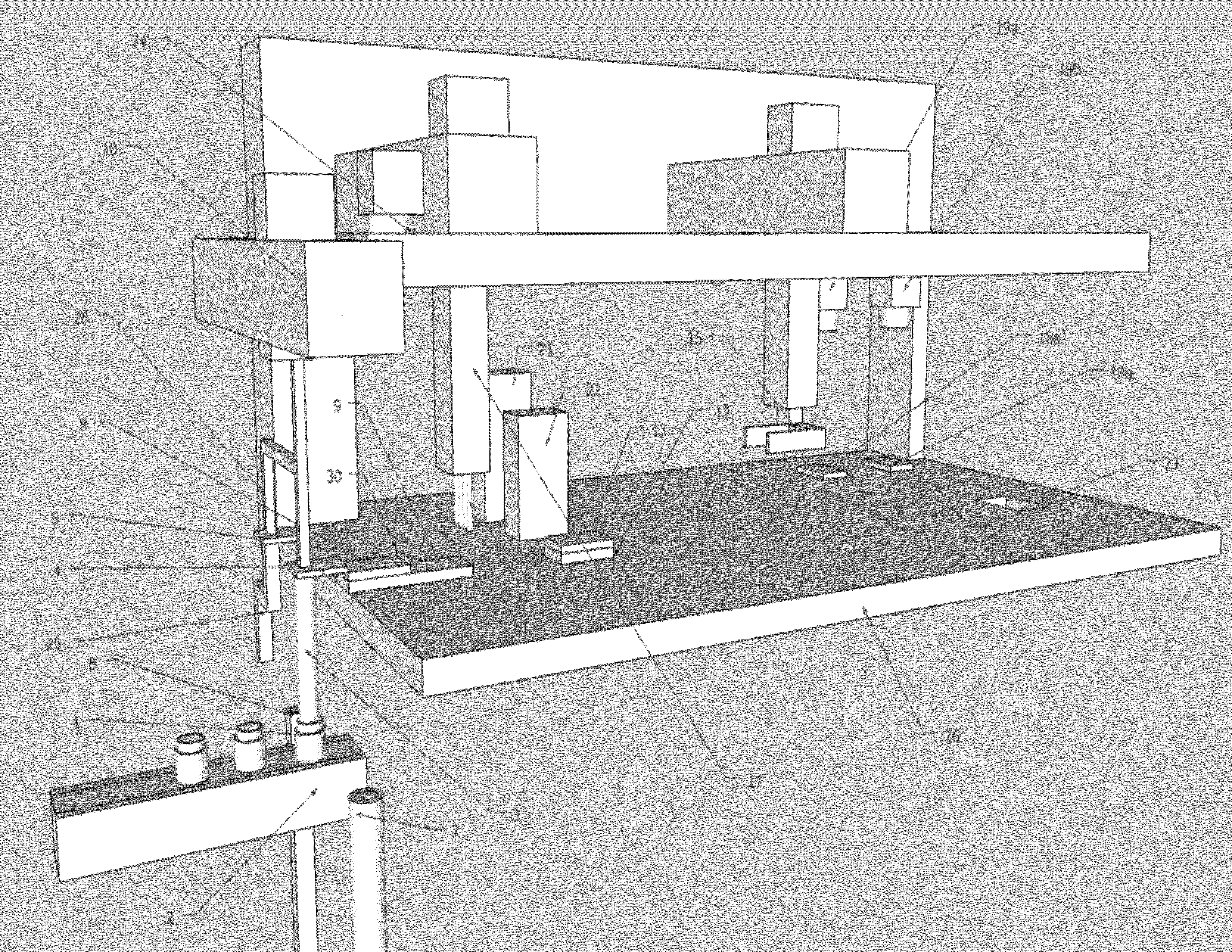Device for automating behavioral experiments on animals
a technology for animals and devices, applied in the field of machines for sorting live animals, can solve the problems of difficult task, time-consuming process, and high cost of processing rodents for testing biologically active agents
- Summary
- Abstract
- Description
- Claims
- Application Information
AI Technical Summary
Benefits of technology
Problems solved by technology
Method used
Image
Examples
example 1
5. Example 1
High Throughput Screening of Compounds that Affect Circadian and Sleep / Wake Behavior
[0108]The presently described invention is used to screen compounds that influence the sleep and wake behavior of flies, by any method known to one of ordinary skill in the art, for example, but not limited to preparing flies for behavior analysis with the methods described in PMID 19369499 and PMID 20075256, both hereby incorporated in their entirety by reference. Potential drug targets influencing circadian and sleep / wake behavior are conserved between fly and human.
example 2
6. Example 2
High Throughput Screening of Compounds that Affect Learning Behavior
[0109]The presently described invention is used to screen compounds that influence the olfactory learning behavior of flies, by any method known to one of ordinary skill in the art, for example, but not limited to preparing individual flies for behavior analysis with the methods described in PMID 119837039, hereby incorporated in its entirety by reference. Potential drug targets influencing learning behavior are conserved between fly and human.
PUM
| Property | Measurement | Unit |
|---|---|---|
| Composition | aaaaa | aaaaa |
| Therapeutic | aaaaa | aaaaa |
Abstract
Description
Claims
Application Information
 Login to View More
Login to View More - R&D
- Intellectual Property
- Life Sciences
- Materials
- Tech Scout
- Unparalleled Data Quality
- Higher Quality Content
- 60% Fewer Hallucinations
Browse by: Latest US Patents, China's latest patents, Technical Efficacy Thesaurus, Application Domain, Technology Topic, Popular Technical Reports.
© 2025 PatSnap. All rights reserved.Legal|Privacy policy|Modern Slavery Act Transparency Statement|Sitemap|About US| Contact US: help@patsnap.com


